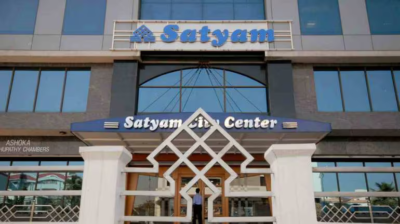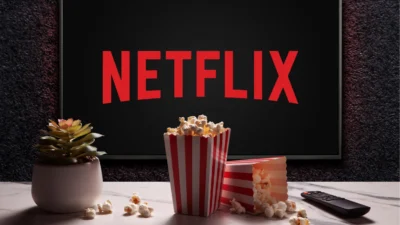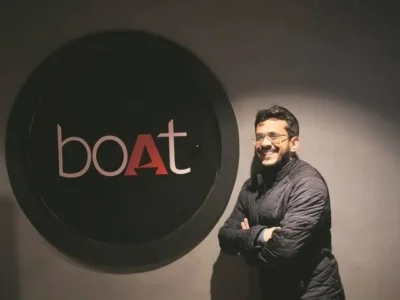Born Out of a Frustration
It all started with a broken Apple charger. That was the spark for Aman Gupta, a finance graduate turned entrepreneur, who found himself repeatedly annoyed by expensive electronics accessories that wouldn’t last. Together with Sameer Mehta, he decided to do something about it and that something became boAt, a lifestyle brand that millions of Indians now carry in their ears and bags.
But this wasn’t just a headphone company. boAt came with a bigger idea to build a brand for Indian millennials who were stylish, price-conscious, and digitally active.
The Beginning: Selling Style, Not Just Sound
Launched in 2016, boAt didn’t enter the market trying to fight Bose or Sony on sound quality. Instead, they created affordable, trendy, and durable products. All wrapped in edgy branding that clicked with India’s younger audience. They started small. Their early products included charging cables and audio accessories, sold online through Amazon and Flipkart. But the real turning point came with budget earphones and headphones that looked cool, performed well, and didn’t break easily.
What stood out was their branding fun, youthful, and fearless. Their customers were not “users”; they were “boAtheads”. The language felt like a conversation, not a pitch.
The Rise: Disrupting an Industry
By 2019, boAt was the #1 wearable audio brand in India, outselling giants like JBL and Sennheiser. They didn’t do it with big TV ads or celebrity endorsements at first instead, they worked smart. They Sold only online, keeping costs low, used Amazon/Flipkart data to understand buyer preferences, focused on influencers and youth marketing and introduced new models frequently to match trends.
They became the go-to brand for budget-conscious buyers who wanted style without breaking the bank. Their pricing hit the sweet spot, a good quality with under ₹2000. While many startups burn money to gain users, boAt kept things lean and profitable. They didn’t chase vanity metrics, they chased margins.
Strategy That Clicked
boAt wasn’t just selling electronics. They were selling aspiration and personality. Their products came in stylish colors and packaging. They collaborated with cricketers, Bollywood actors, fashion brands, and even music festivals. They also assembled products in India, aligning with the “Make in India” push, which helped them manage costs and gain goodwill.
Aman Gupta’s stint on Shark Tank India further made boAt a household name. Their strategy combined:
- Product innovation based on real feedback
- Customer-first pricing
- Aggressive digital presence
- Brand identity that felt Indian yet global
Challenges Along the Way
Despite success, boAt had its fair share of problems. The low-cost market is crowded. New brands like Noise, Boult, and Fire-Boltt started copying their formula. Their early dependence on Chinese manufacturers became risky during border tensions and the COVID-19 pandemic. Their 2022 IPO plans were paused due to market volatility, despite being profitable. But boAt stayed agile, diversifying into smartwatches, improving local manufacturing, and building deeper brand engagement.
Not Just Electronics; A Lifestyle
boAt doesn’t call itself a tech company. It calls itself a lifestyle brand. That small change in mindset shaped everything from product design to marketing. Today, you’ll find boat on Instagram feeds of influencers, at music festivals, around cricket stadiums, in college campuses. They made electronics not just useful but cool and wearable.
Lessons for Every Business
boAt’s story holds valuable business lessons, especially for Indian entrepreneurs:
- Solve your own problems first. Aman Gupta’s frustration was real and so was the market for his solution.
- Focus on branding as much as product. Their tone, language, and packaging spoke directly to the youth.
- Don’t overspend to grow. BoAt grew profitably, keeping a tight ship.
- Leverage online platforms. They used marketplaces as launchpads instead of building costly retail stores.
- Stand for something bigger. “Make in India” and “By Indians, for Indians” these messages helped build loyalty.
The Road Ahead
BoAt is now expanding its product categories from TWS earphones and soundbars to smartwatches and grooming products. They’re also investing in design labs and innovation centers in India.
And while the IPO is on hold, they’ve already proven that a homegrown Indian brand can take on global giants and win. They’re not just riding a wave, they’re building one.
Conclusion
boAt’s journey reminds us that business success doesn’t always come from having the most advanced tech or the most capital. Sometimes, it comes from understanding your people, your market, and your culture and building something that reflects them. They listened, adapted, marketed boldly, and scaled sensibly. And in doing so, they turned sound into a statement.






